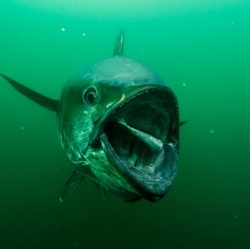
56 million years ago, a pulse of CO2 in the atmosphere sent temperatures soaring. In the oceans, carbonate sediments dissolved; some organisms went extinct and others evolved. Acidification caused the crisis, similar to today, as human made CO2 combines with seawater.
Now, for the first time, scientists have quantified the extent of surface acidification from those ancient days, and the news is not good: the oceans are on track to acidify at least as much as they did then, only at a much faster rate. In a study published in the latest issue of Paleoceanography, the scientists estimate that ocean acidity increased by about 100 percent in a few thousand years or more, and stayed that way for the next 70,000 years.
In this radically changed environment, some creatures died out while others adapted and evolved. The study is the first to use the chemical composition of fossils to reconstruct surface ocean acidity at the Paleocene-Eocene Thermal Maximum (PETM), a period of intense warming on land and throughout the oceans due to high CO2.
"This could be the closest geological analog to modern ocean acidification," said study coauthor Bärbel Hönisch, a paleoceanographer at Columbia University’s Lamont-Doherty Earth Observatory. "As massive as it was, it still happened about 10 times more slowly than what we are doing today."
The oceans have absorbed about a third of the carbon humans have pumped into the air since industrialization, helping to keep earth’s thermostat lower than it would be otherwise. But that uptake of carbon has come at a price. Chemical reactions caused by that excess CO2 have made seawater grow more acidic, depleting it of the carbonate ions that corals, mollusks and calcifying plankton need to build their shells and skeletons.
